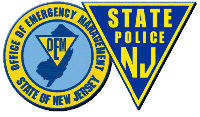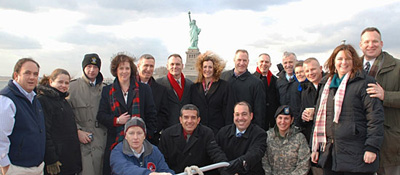News
FEMA Recycles, School Children Benefit
 SAN JUAN, Puerto Rico -- FEMA donated 370 pre-used computers to 26 public schools and six private non-profit organizations in Puerto Rico. The donation was made in coordination with the Office of the Governor, the PR Department of Education and the General Services Administration (GSA).
SAN JUAN, Puerto Rico -- FEMA donated 370 pre-used computers to 26 public schools and six private non-profit organizations in Puerto Rico. The donation was made in coordination with the Office of the Governor, the PR Department of Education and the General Services Administration (GSA).
"Over the past 20 years, FEMA has assisted many individuals and families in Puerto Rico. On this occasion, we are glad to participate and help public schools and students with such a vital educational tool that will help amplify their learning experience," said Alejandro De La Campa, DHS/FEMA's Caribbean Area Division Director.
FEMA made the donation of pre-used computers under GSA's "Computers for Learning Program," which helps schools with financial constraints obtain excess computer equipment from federal agencies.
Each of the schools will receive ten CPU Tower, Pentium 4, 1.8 GHZ, ten Flat, 17" Monitor w/base, and ten UPS, Battery Backup. The total FEMA donation had an original value of $362,600.
What's New Jersey Doing?
 They're at it again.
They're at it again.
Public Information Officers (PIOs) from New Jersey 's 21 counties met in West Trenton this month for their first meeting of 2009. County PIO Summits have been held quarterly over the past year, hosted by the New Jersey Office of Emergency Management (NJOEM). They are designed to both share ‘best practices' for public information during emergencies, and to develop new ones. And they're already showing results.
Last year the group found that many common emergencies in New Jersey – flash flooding; hazard materials release; evacuations and shelter in place instructions – did not have the necessary codes to interrupt regular programming. This oversight delays public notification of an emergency, as well as potentially life-saving instructions.
Led by NJOEM PIO Nick Morici, the group identified six emergencies common in New Jersey and a priority code for each. Next month, they will be ask the State Emergency Coordinating Center (SECC) to adopt these codes, giving them "auto pass-through” status within New Jersey 's Emergency Alert System.
"Tailoring the codes to reflect the risks our residents actually face will speed notification and outreach efforts in all future emergencies,” Morici said.
This month's meeting featured a presentation by Howard Butt, a NJOEM training officer who is also the state's coordinator for the Community Emergency Response Teams (CERT). New Jersey leads the nation with 15,000 trained CERT volunteers operating on 450 teams. Yet Butt used the forum to enlist support on augmenting those numbers.
"We need every resident to know there are a lot of ways to be involved in protecting their communities,” Butt said.
CERT operates under the umbrella of Citizens Corp., which was launched in January 2002 to coordinate volunteer activities that make communities safer, stronger and better prepared. Citizens Corp also includes the Medical Reserve Corp, Fire Corp, Volunteers in Police Service and Neighborhood Watch.
War College Visits Region II

For more than 100 years, the U.S. War College has been training the nation's best military minds for the Army's highest commands. Each year 350 promising officers and other military leaders are selected for a rigorous, 10-month course held at the Army's capstone educational facility.
The War College and FEMA share mutually reinforcing missions. The College plays a vital role in fulfilling national defense objectives. FEMA's mission is to safeguard and protect lives and property in response to natural and man-made disasters, including acts of terrorism.
Little wonder then, for the second year running, the College gave top priority to visiting FEMA's Region II offices, just blocks from Ground Zero. Students came to learn how the National Response Framework (NRF) works on a day-to-day basis.
"They came away with a far greater understanding of how the Region fosters response partnerships, maintains flexibility in its operational capability, and ensures unity of effort and unity of command during disasters,” said Colonel Daniel Grey, a College faculty member and the group's escort.
"I really see now how the national response Framework's coordinating structures in Region II are always in effect and how they align key roles and responsibilities," said Colonel Jeffrey Lepak, a senior officer.
"This approach promotes engaged partnerships at all levels, and shared response goals among leaders, so that no one is overwhelmed in times of crisis. It definitely empowers leaders at all levels to work together more effectively to help save lives and protect America's communities. All this is in perfect alignment with the War College's mission of furthering our national defense objectives."
The overwhelming consensus among the elite students is that FEMA's NRF is working in Region II.
News Archive
Last Modified: Monday, 16-Mar-2009 14:18:31 EDT
